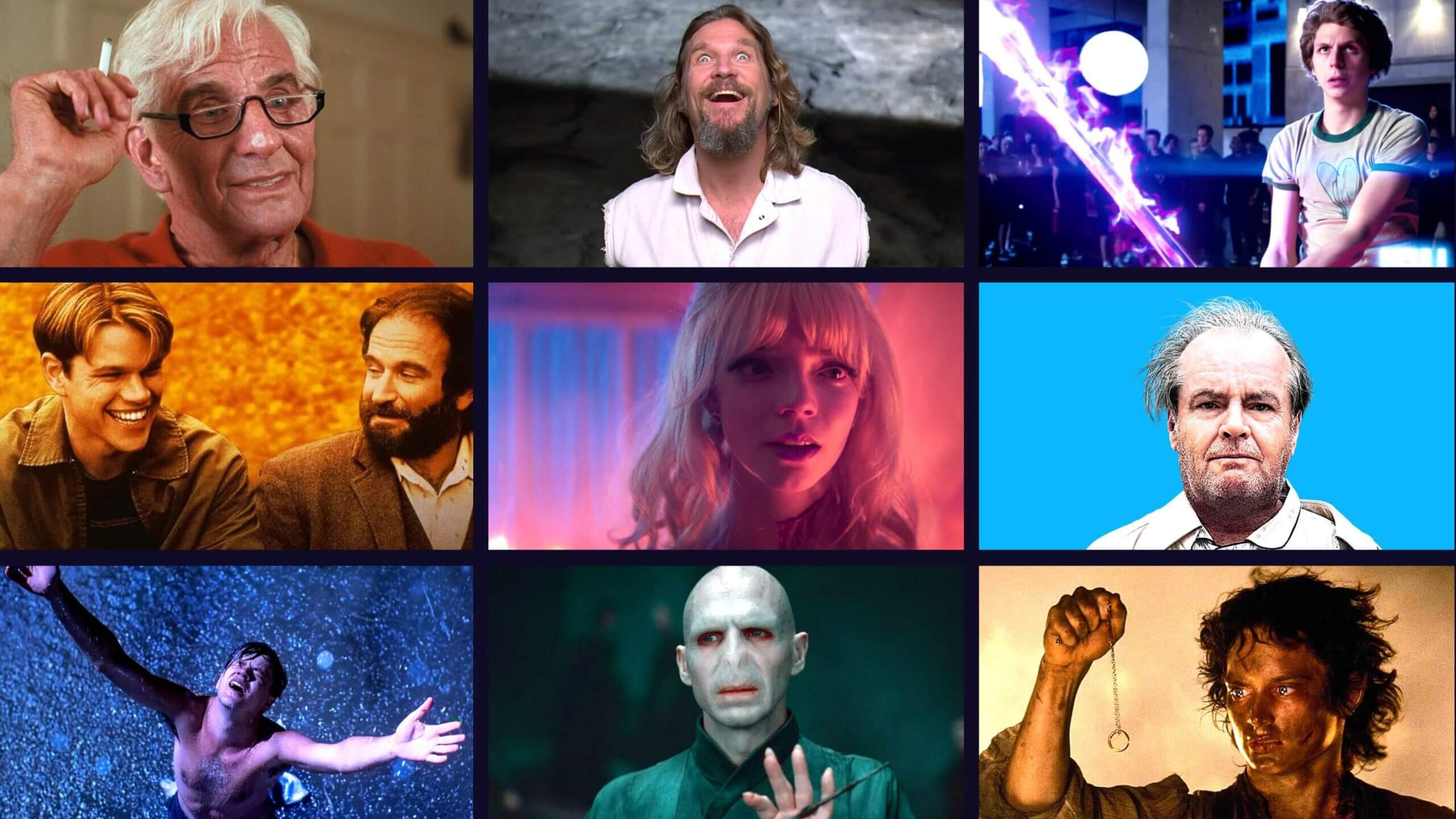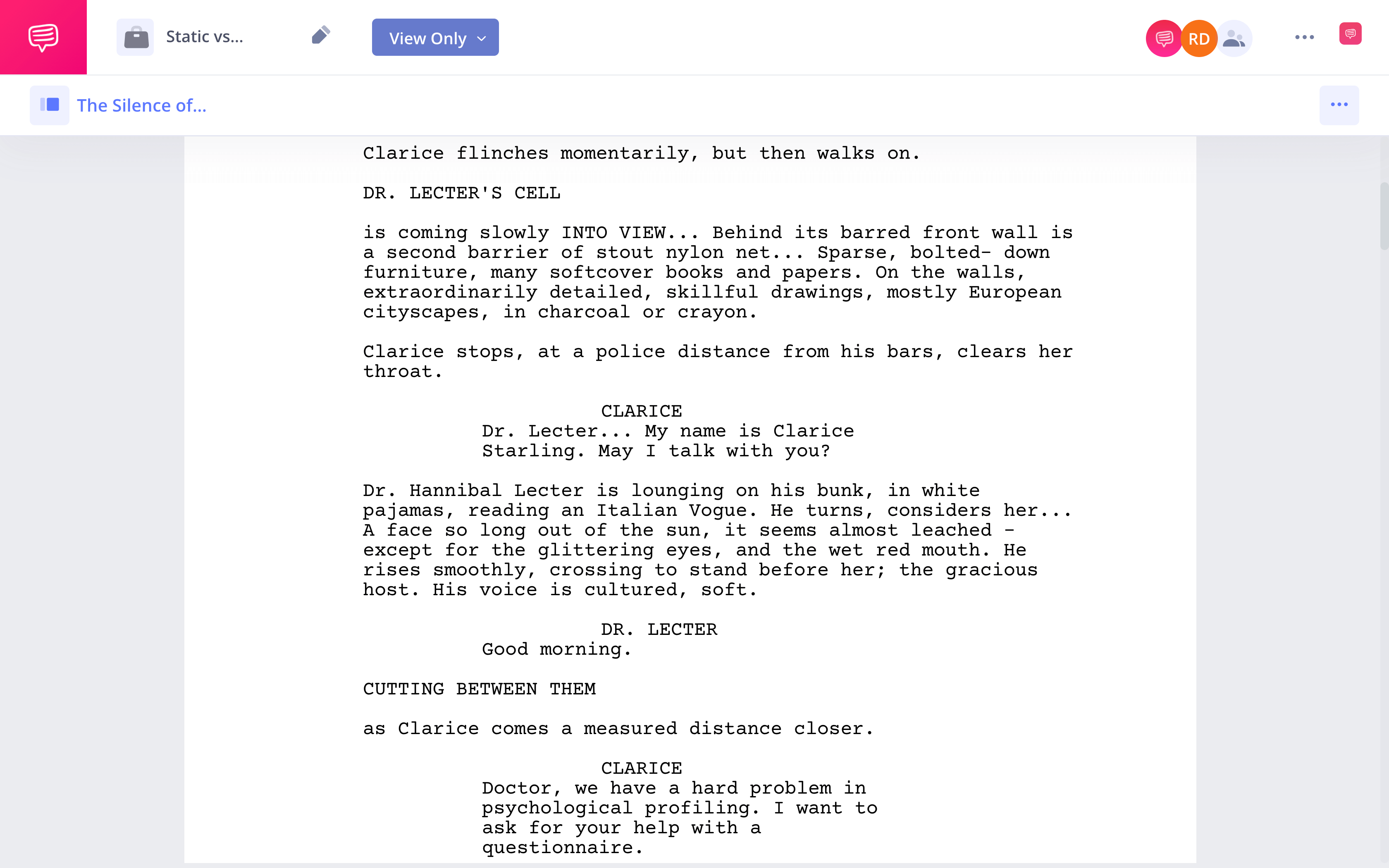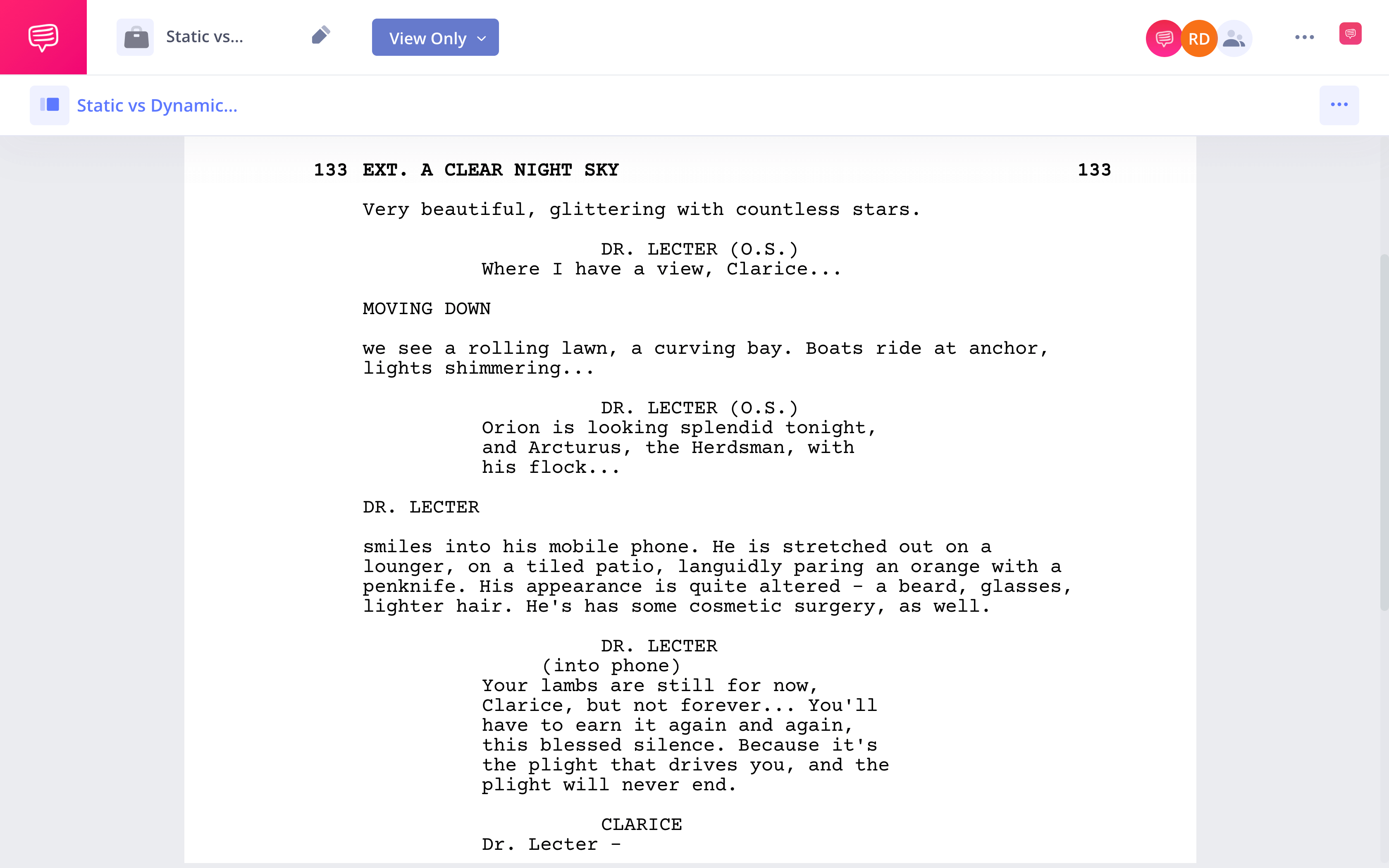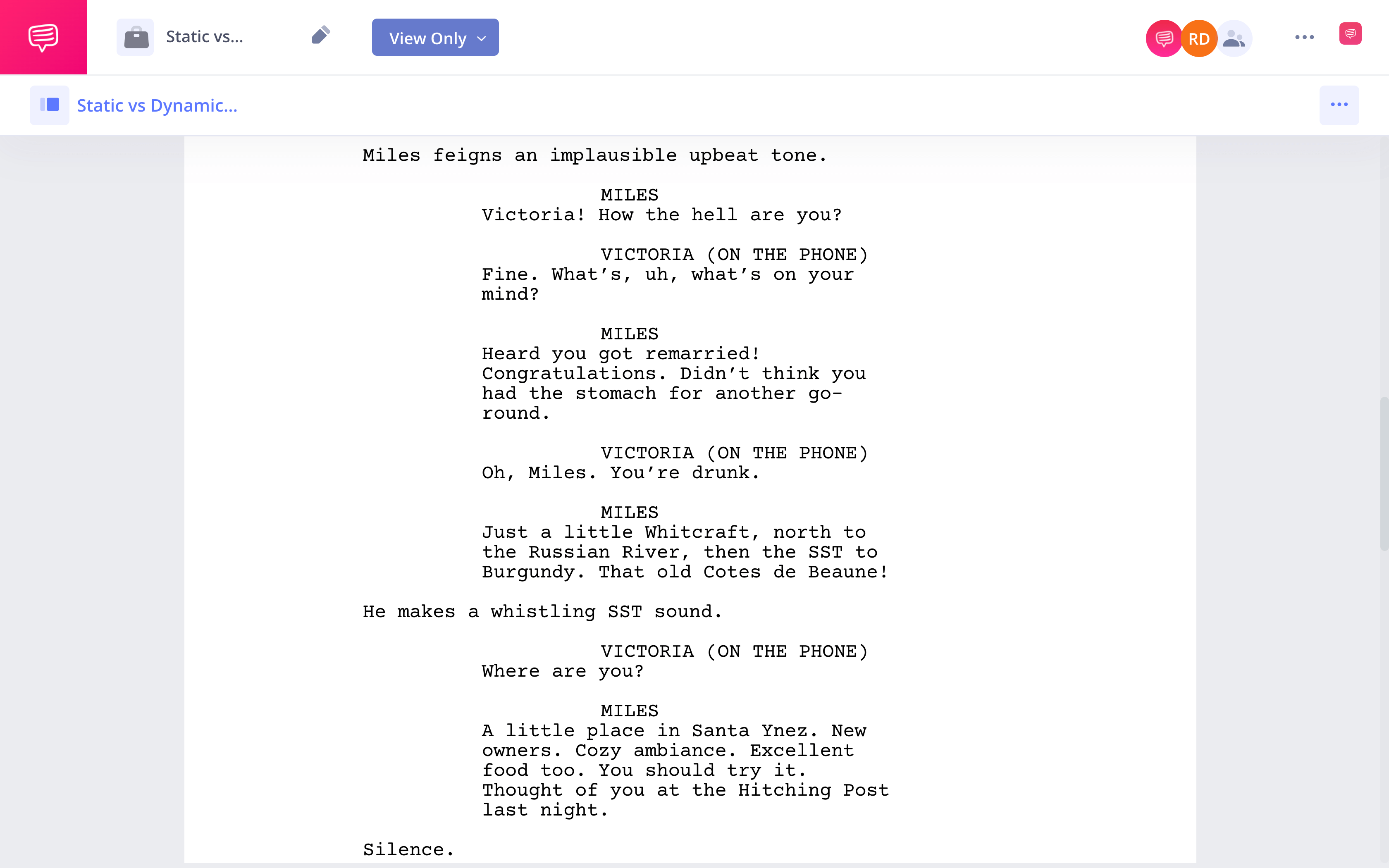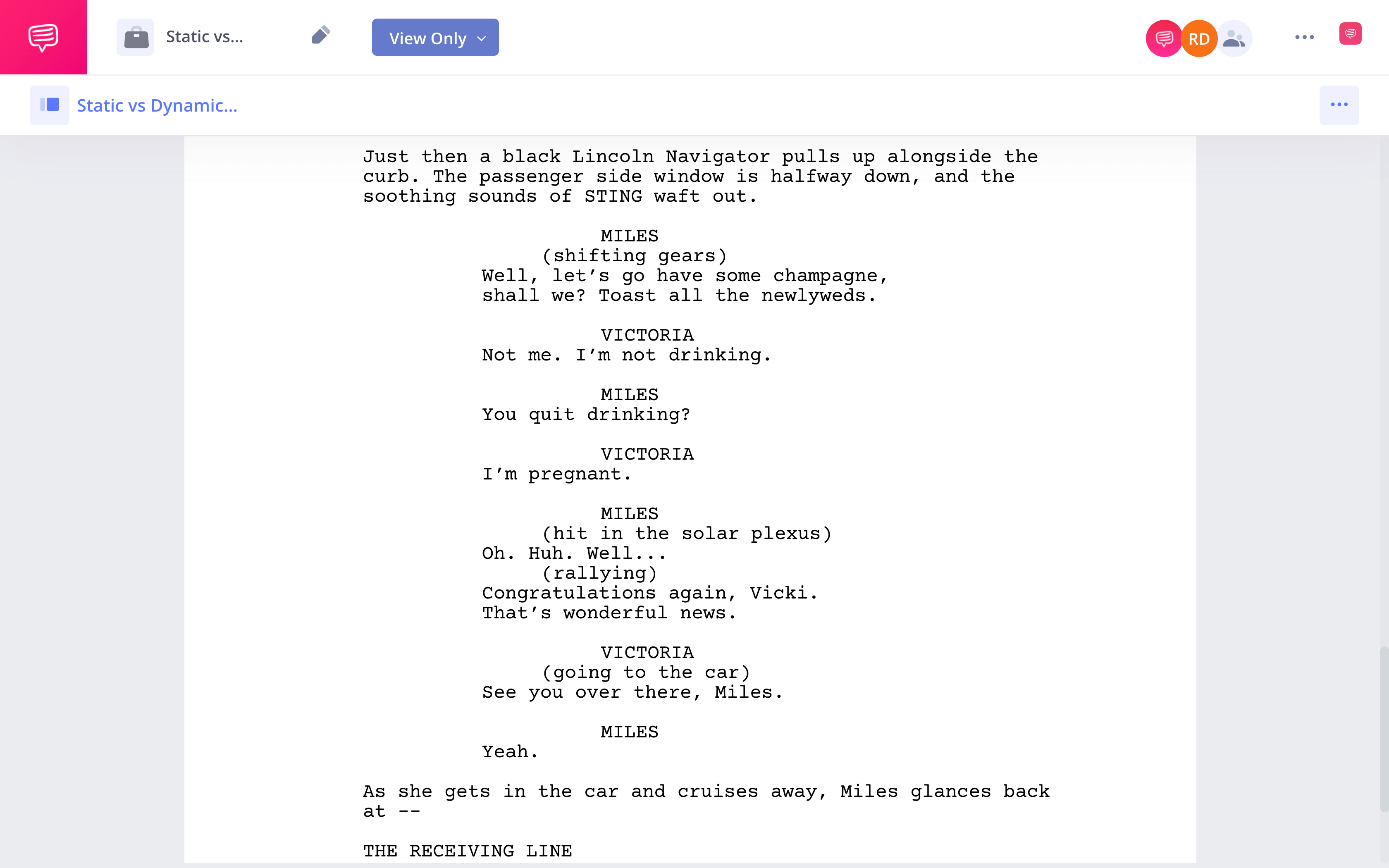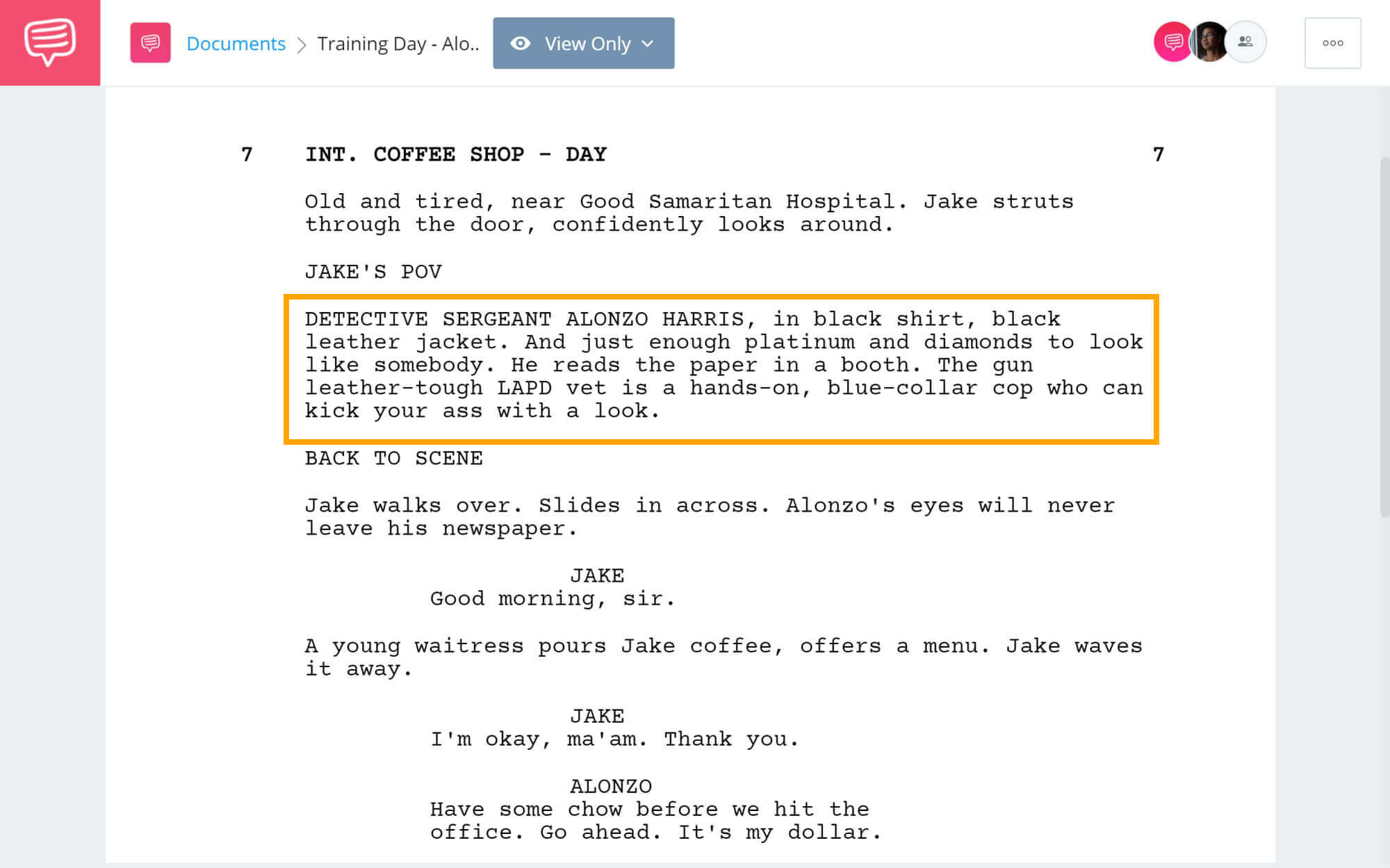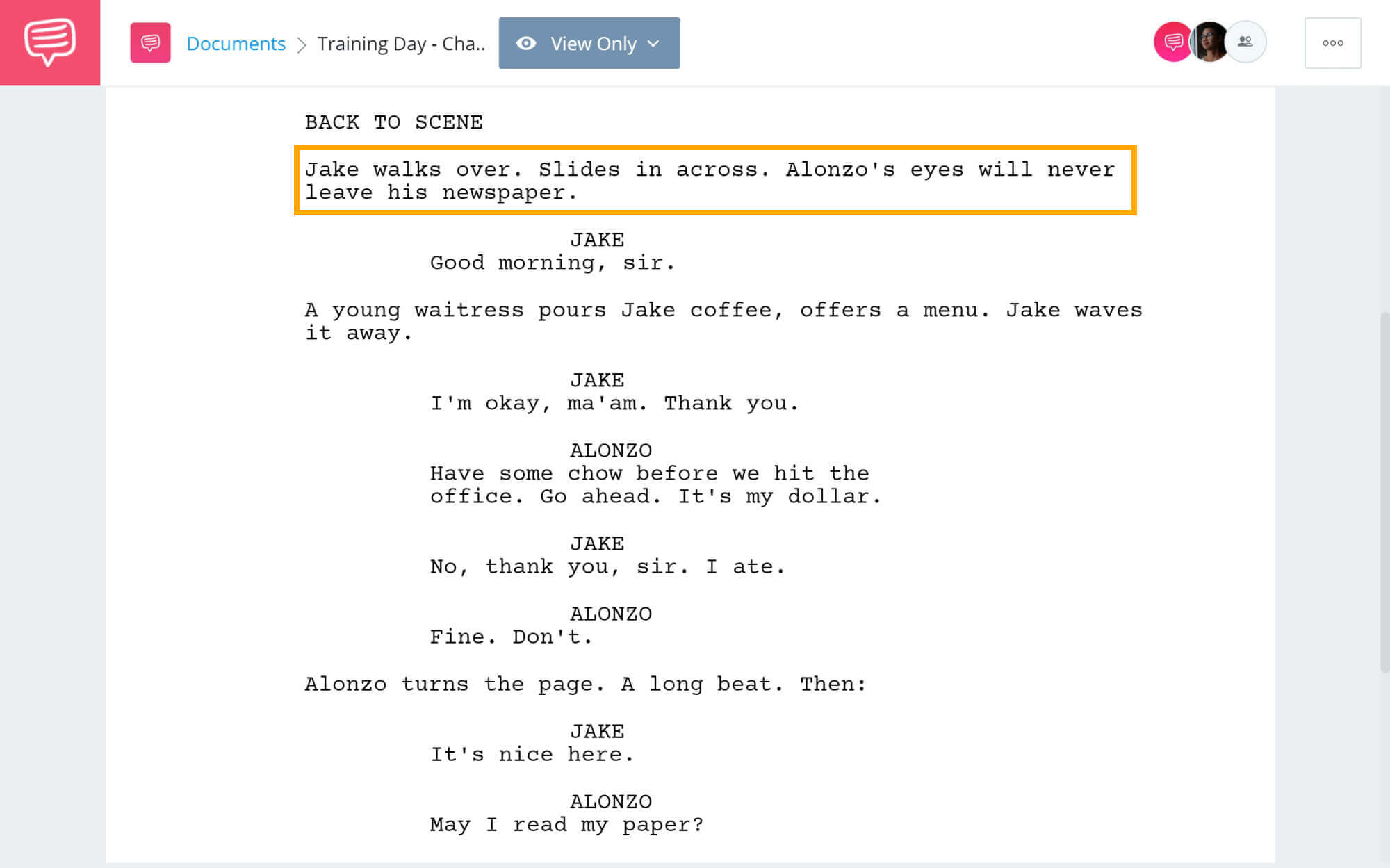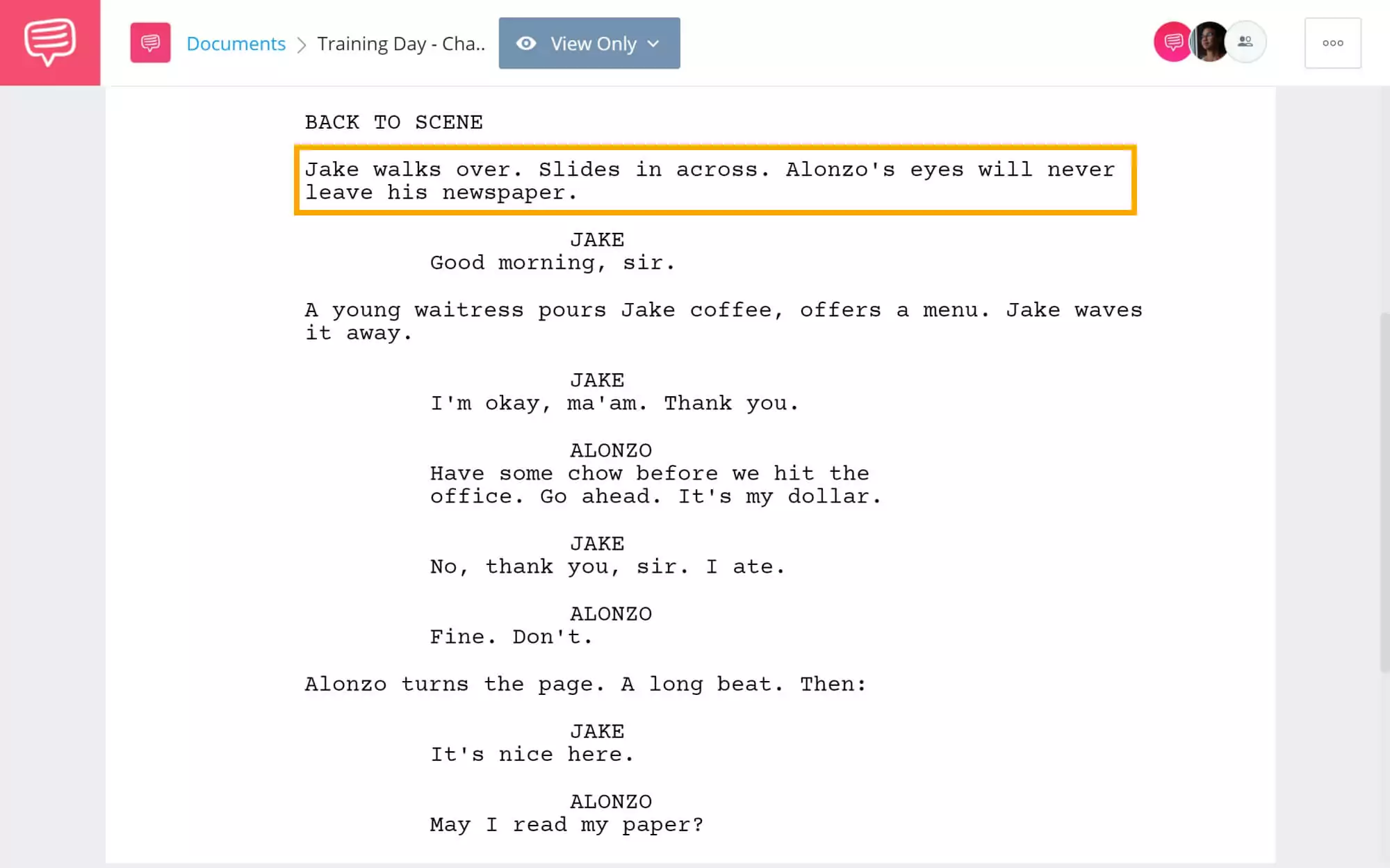In the vast realm of literature, characters either evolve or remain the same throughout the narrative. This dichotomy is not just about character development, but also significantly contributes to the unfolding of the plot and the conveyance of themes.
Thus, understanding the character types of a static vs dynamic character plays a pivotal role in extracting the underlying meaning and appreciating the depth of literary works or writing your own stories.
What is a Static vs Dynamic Character in Story?
Defining a static vs dynamic character
The selection between static and dynamic characters shapes the reader's connection with the narrative, amplifying emotional engagement. Let’s start by distinguishing static vs dynamic characters through each term’s definition.
STATIC VS DYNAMIC CHARACTER DEFINITION
What is a Static vs Dynamic Character?
Static Characters: As the name suggests, they are those whose personalities, attitudes, and beliefs remain consistent throughout the narrative. They are not affected by the events of the story and thus provide a stable perspective.
An iconic film example of a static character would be Darth Vader from the Star Wars saga. Despite his actions and the events that unfold, his dark and intimidating presence remains unchanged.
Dynamic Characters: On the contrary, dynamic characters undergo significant transformation, often as a result of experience or insight gained throughout the story. It is not simply a change in character circumstances, but a fundamental shift in their worldview or personality.
A classic example would be Ebenezer Scrooge from Charles Dickens' A Christmas Carol. Scrooge begins as a curmudgeonly miser, but by the end, he becomes a generous, kind-hearted individual.
Static Characters in Movies and Story
Value of static characters
Static characters hold a particular value in literary narratives, serving as a consistent element in the ever-evolving plot. Let's look at some of the functions of the static character that bring value to their use in storytelling.
Consistency in a Narrative
Static characters hold a central position in storytelling, primarily serving as stabilizing elements amidst the flux of the narrative. They offer a consistent lens through which the readers or viewers can perceive the unfolding events, rendering a sense of continuity and reliability.
Their unchanging nature provides contrast and highlights the transformations of other characters, thereby enriching the story's depth and complexity.
Static Characters' Impact on the Plot
Static characters play an indispensable role in propelling the plot. Their unwavering nature often acts as a catalyst for change, provoking dynamic characters to confront their flaws or spurring conflicts integral to the storyline.
Furthermore, their predictable behavior can create dramatic irony, enhancing the plot's depth and complexity.
Static Characters' Influence on Other Characters
Static characters can significantly impact the development of other characters. By remaining consistent, they serve as a contrasting foil to dynamic characters, highlighting their transformation.
Additionally, their enduring qualities can influence other characters' reactions or decisions, furthering character interaction and development.
Static Characters in Popular Films
In the realm of cinema, countless examples of impactful static characters exist. One notable instance is Hannibal Lecter from The Silence of the Lambs.
Lecter changes very little throughout the film. Take a look at his introduction, which we imported into StudioBinder’s screenwriting software:
Silence of the Lambs PDF
Lecter is calm, cool, and collected. He’s “lounging” and his voice is “cultured, soft.” Now, let’s take a look at his description in his very final scene.
Silence of the Lambs script PDF
The man has changed so little that he’s still lounging, albeit in a different place. He may look slightly different, but he’s still exactly the same.
But though he remains unchanged, his interactions with Clarice Starling lead to her profound character growth.
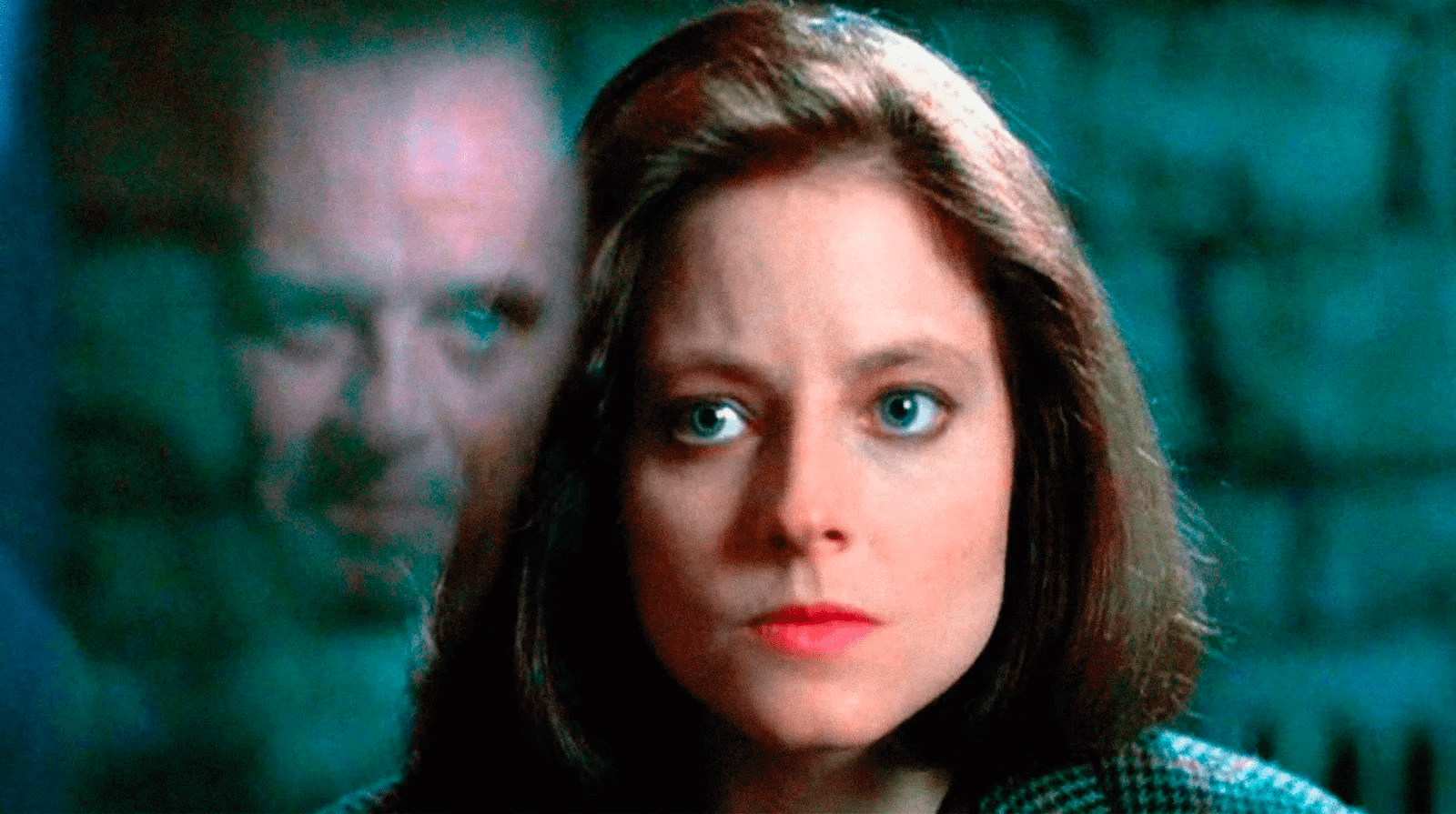
Silence of the Lambs
Similarly, Indiana Jones from the eponymous series, with his unwavering courage and determination, remains a static character who consistently drives the narrative forward.
These characters underline the fact that while static characters may not undergo personal transformation, they undoubtedly contribute to the richness and dynamism of the story.
Dynamic vs Static Character
Value of dynamic characters
Dynamic characters are the lifeblood of any narrative, imbuing it with unpredictability and depth. They markedly evolve as the story progresses — learning, growing, or even regressing in response to the events.
Let's delve into the nuanced significance of dynamic characters and their critical role in driving the story forward.
Importance of Dynamic Characters
Dynamic characters serve as the beating heart of a narrative, humanizing stories with their complex emotions and transformative journeys. They often embody the primary themes of a story, allowing readers or viewers to understand and engage with these messages more deeply.
For example, in J.D. Salinger's The Catcher in the Rye, Holden Caulfield undergoes a transformative journey, reflecting the novel's exploration of alienation and the search for authenticity.
Dynamic Characters' Impact on the Plot
Dynamic characters' transformations are often central to the plot, driving the narrative forward. Their evolution, which stems from their experiences and interactions, creates intrigue and suspense, keeping audiences hooked.
In the movie The Godfather, Michael Corleone's transformation from a morally upright war hero to a ruthless mafia boss forms the crux of the plot, making the narrative compelling, following his fall as a tragic hero.
Michael Corleone: The Tragic Hero
Dynamic Characters' Influence on Other Characters
Dynamic characters can have a profound impact on other characters and their development. Their actions, decisions, and transformations often serve as turning points in the narrative, triggering change in other characters or the storyline. In Pride and Prejudice by Jane Austen, Elizabeth Bennet's dynamic nature and evolution influence not just her personal journey but also the attitudes and actions of Mr. Darcy, a fellow dynamic character.
Dynamic Characters in Popular Films
Dynamic characters abound in cinematic narratives, often delivering the most impactful performances. In Sideways, Miles begins as an angry and depressed recluse. He’s coming off a divorce and is a mess when his ex-wife is brought up, as we can see in this scene where he drunkenly calls her:
Sideways script PDF
But by the end of the movie, he grows up– just a little. Instead of making a huge stink at the wedding, which he promised to do, he takes the high road:
Sideways screenplay
As Sideways shows us, a dynamic character doesn’t need to make a huge 180. They can change slowly, and just a little.
Another notable example is Luke Skywalker from the Star Wars series is one of the most iconic dynamic characters in film. His journey from a simple farm boy to the savior of the galaxy forms the backbone of the Star Wars saga.
Related Posts
Static vs Dynamic Character Writing Tips
Crafting Static and Dynamic Characters
Creating memorable characters is a vital aspect of storytelling. Here are some tips to help you develop both static and dynamic characters effectively:
Static Characters
Consistency: Keep the character's personality, values, and behaviors consistent throughout the story. This doesn't mean they can't have layers or depth, but their core should remain the same.
Purposeful Placement: Use your static characters to highlight contrasts with your dynamic characters, or to provide stability within the world of your narrative.
Avoid Stereotypes: While static characters don’t undergo significant changes, they shouldn't be one-dimensional or cliché. Make them interesting and complex.
Dynamic Characters
Clear Character Arc: Your dynamic character should undergo a clear transformation and character arc. This could be a change in their beliefs, attitudes, or behaviors that is triggered by the events in the story.
Motivation: Ensure your dynamic character has a strong motivation driving their change. This could be a goal they want to achieve, a fear they want to overcome, or a question they seek to answer.
Show Progression: Don’t make the change happen all at once. Gradually show how the character evolves in response to the events and conflicts they encounter.
Remember, whether static or dynamic, each character should serve a purpose and contribute to the overall narrative in a meaningful way.
It’s important to remember that both static and dynamic characters bring unique value to a narrative. Static characters offer stability and contrast, underscoring the transformations of others, while dynamic characters bring depth, complexity, and human relatability to the story, embodying its themes and driving the plot. Both character types, utilized effectively, contribute to the richness and dynamism of storytelling.
Up Next
Round vs. Flat Character
As we've explored the significance and development of static and dynamic characters, it's equally important to understand other character classifications in literature. Let's now delve into another fascinating topic: the comparison between round and flat characters.
Up Next: Round vs. Flat Character →
The Lord of the Rings: The Fellowship of the Ring is the best story in the trilogy. There are those who will disagree with me, but there’s no denying that Fellowship does a tremendous job of establishing the characters and world of Middle-Earth – while also balancing fantastical whimsy with dramatic action. Fellowship is adapted screenwriting done right – and we’re going to show you why it works. Fly you fools! Download a copy of the Lord of the Rings script below and follow along as we break down its plot.
The Lord of the Rings: The Fellowship of the Ring PDF Download
Click to view and download the entire The Lord of the Rings: The Fellowship of the Ring script PDF below.
Click above to read and download the entire The Lord of the Rings: The Fellowship of the Ring script PDF
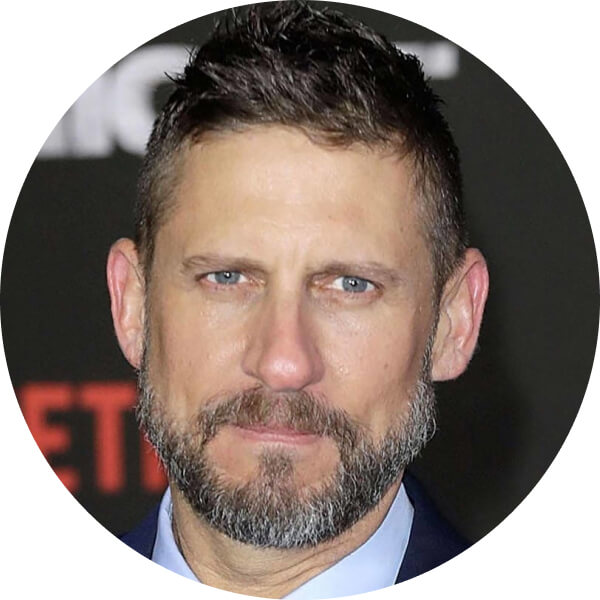
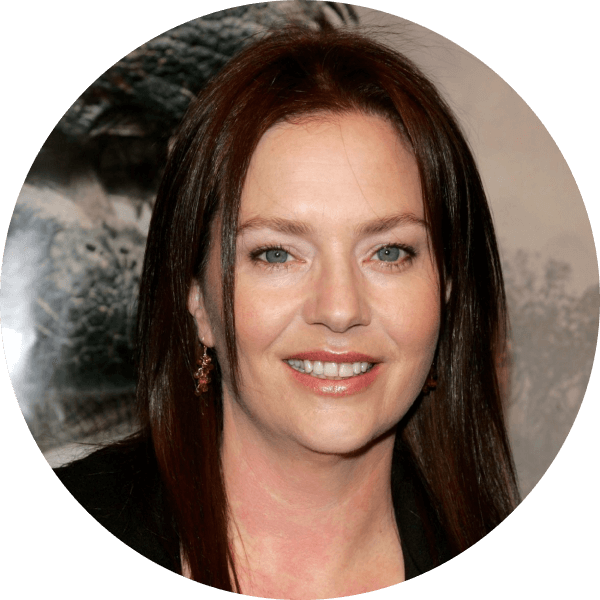





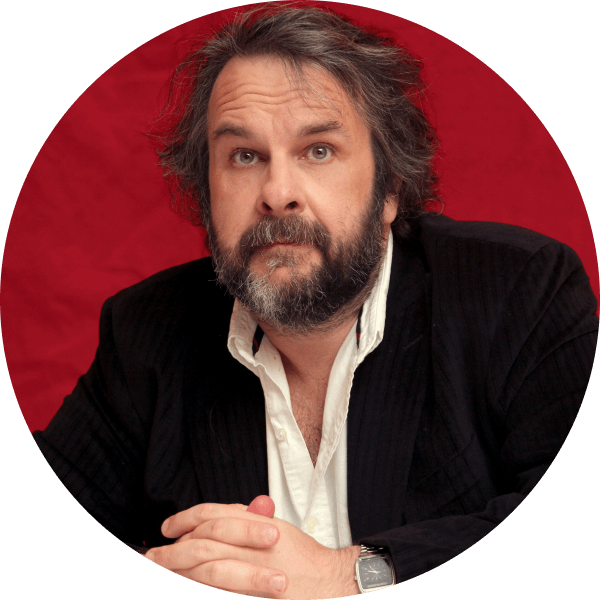


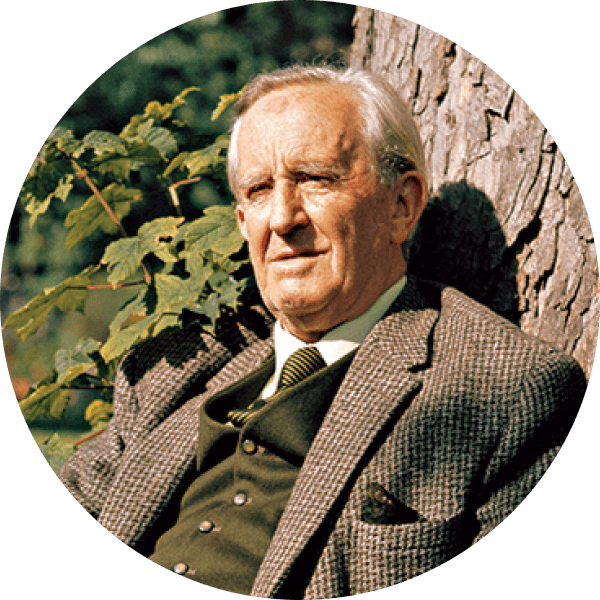

WHO WROTE THE LORD OF THE RINGS: THE FELLOWSHIP OF THE RING SCRIPT?
Written by Fran Walsh, Philippa Boyens, and Peter Jackson
Based on the novel by J. R. R. Tolkien.
Fran Walsh is a New Zealand screenwriter, producer, and musical lyricist who’s perhaps best known for her work on The Lord of the Rings and The Hobbit movies. Walsh won three Academy Awards for Best Picture, Best Adapted Screenplay, and Best Original Song for The Lord of the Rings: The Return of the King.
Philippa Boyens is an Academy Award winning New Zealand screenwriter and producer – and frequent collaborator of Walsh and Jackson. Boyens also served as the Director of the New Zealand Writers Guild.
Peter Jackson is a New Zealand director, producer, and screenwriter. Jackson, a three-time Academy Award nominee and six-time nominee, is one of the most celebrated filmmakers of his generation.
STORY BREAKDOWN
STRUCTURE OF THE LORD OF THE RINGS: THE FELLOWSHIP OF THE RING SCREENPLAY
Here is the story structure for The Lord of the Rings: The Fellowship of the Ring screenplay:
Prologue
Galadriel narrates the story of “the One True Ring of Power.” The One Ring was created by the dark lord Sauron ~3000 years before the events of the story to rival the 19 rings of power that were made to empower the elvish, dwarven, and human alliance. The One Ring went from Sauron (who was ‘killed’ at The Battle of Dagorlad), to Isildur (who was killed shortly after), t0 “the creature” Gollum, to the hobbit Bilbo Baggins.
Exposition
Bilbo Baggins begins writing the story of his exploits with the One Ring – titled “There and Back Again” – ahead of his 111th birthday party. Later that night, he celebrates with the wizard Gandalf, his nephew Frodo, and all the other hobbits in Hobbiton.
Inciting Incident
Bilbo relinquishes the One Ring to Frodo and leaves Hobbiton. A short time later, Gandalf returns and tells Frodo that dark forces are on their way and that he must leave the Shire with the One Ring. Frodo, along with his best friend Samwise Gamgee, depart for the open road.
Plot Point One
Gandalf confronts the wizard Saruman with news of Sauron’s resurgence. Saruman reveals that he’s succumbed to Sauron’s influence and then detains Gandalf.
Plot Point One
En route to the town of Bree (where Gandalf instructed them to go), Frodo and Sam join up with two other hobbits: Merry and Pippin. But when they arrive, they learn Gandalf hasn’t been seen for a long time – in his stead, a mysterious ranger named Strider protects the hobbits from the Ringwraiths (former Human Kings enslaved by Sauron) who are in pursuit of the One Ring.
Rising Action
The Ringwraiths catch up with the hobbits and Strider – and one stabs Frodo with a Morgul blade. Strider tells Frodo he can only be healed by the Elves in Rivendell.
Midpoint
Frodo is healed by the half-elf Elrond in Rivendell, where he meets Gandalf (who escaped from Saruman’s clutches by way of a perfectly timed jump onto a Golden Eagle).
Midpoint Part II
Elrond summons Frodo, Gandalf, Strider (who’s revealed to be the one true heir to Gondor, Aragorn), the elf Legolas, the Dwarf Gimli, and the human Boromir to tell them they must bring the One Ring to Mount Doom in Mordor. Sam, Merry, and Pippen also agree to join and thus, the fellowship of the ring is born.
Plot Point Two
The Fellowship sets out on an arduous journey to Mordor. Saruman uses magic to impede them, which causes Frodo to decide they must venture into the Mines of Moria. In the Mines, the fellowship discovers that the dwarves were eradicated by goblins – and then are forced to confront and destroy a cave troll.
Build Up
A fire beast – a Balrog – awakens in the Mines of Moria. Gandalf battles it so the rest of the fellowship can escape. The fellowship rests in an Elvish settlement where the lady of the Elves, Galadriel (who narrated the prologue), shows Frodo what will become of Middle-Earth if he doesn’t destroy the One Ring.
Climax
Boromir, stricken by an obsession with the One Ring, attempts to steal it from Frodo. Frodo puts the ring on to escape which alerts nearby orcs. Aragorn swears to protect Frodo and reject the allure of the One Ring.
Finale
Aragorn, Gimli, Legolas, and an unencumbered Boromir protect the hobbits from the orcs. Frodo and Sam venture towards Mordor on a boat; Merry and Pippin escape on foot.
Denouement
Frodo and Sam resolve to bring the One Ring to Mordor on their own. Aragorn, Gimli, and Legolas agree to let them go – but to find/rescue Merry and Pippin.
The Lord of the Rings: The Fellowship of the Ring Script Takeaway #1
The Fellowship of the Ring quotes are memorable
There are a lot of great quotes in The Lord of the Rings movies, but The Fellowship of the Ring probably has the lion’s share of them. We imported The Fellowship of the Ring script into StudioBinder’s screenwriting software to take a look at a few Lord of the Rings quotes that have become famous over the years.
In this scene, Gandalf steps up and confronts the balrog so the rest of the fellowship can escape. As you’re reading, think about how Gandalf is uniquely characterized by what he says.
LOTR Script • Read The Lord of the Rings Script Balrog Scene
Notice anything unique about Gandalf’s choice of verbiage? Well, he doesn’t say “go!” or “go on without me.” No, that would sound familiar – and remarkably un-Gandalf-like. Instead, Gandalf says “fly” and fly, you fools!” Because of this, his dialogue has become subject to parody. But there’s no denying Gandalf is the relayer of some all-time great Lord of the Rings quotes.
Want to see the awesome Balrog scene in action? Check out the clip from the movie below.
LOTR Movie Script to Screen • Watch The Lord of the Rings: The Fellowship of the Ring Balrog Scene
Here are some other great Fellowship of the Ring quotes:
“You shall not pass!” – Gandalf
“When in doubt, follow your nose.” – Gandalf
“A wizard is never late, Frodo Baggins. Nor is he early; he arrives precisely when he means to.” – Gandalf
“I thought up an ending for my book: ‘and he lived happily ever after, unto the end of his days.’” – Bilbo
“You shall be the fellowship of the ring.” – Elrond
“One does not simply walk into Mordor.” – Boromir
“What about second breakfast?” – Pippin
“I will take the ring to Mordor, though I do not know the way.” – Frodo
“I made a promise, Mr Frodo. A promise. "Don't you leave him Samwise Gamgee." And I don't mean to. I don't mean to.” – Sam
“If by my life or death I can protect you, I will. You have my sword.” – Aragorn
The Lord of the Rings: The Fellowship of the Ring Script Takeaway #2
The Fellowship of the Ring characters are key
Characters are key in The Lord of the Rings: The Fellowship of the Ring – perhaps even more than they are in any other film in the trilogy. Why? It’s right in the name! The Fellowship of the Ring is all about the fellowship: Frodo, Sam, Merry, Pippin, Boromir, Gimli, Legolas, Gandalf, and Aragorn; and each character is given their own time in the spotlight.
You can find moments of nuance in just about every character in The Fellowship of the Ring.
Here are some nuanced moments for each of the Fellowship of the Ring characters:
Frodo: when he declares himself the bearer of the One Ring.
Sam: when he follows Frodo’s boat even though he can’t swim.
Merry and Pippin: when they lure the orcs away from Frodo so he can escape.
Boromir: when he realizes the folly of his ways/mankind and pledges to protect the hobbits.
Gimli: when he puts aside his bias towards the elves.
Legolas: when he recognizes Durin’s Bane as a balrog; essentially displaying his intellect.
Gandalf: when he confronts the balrog so the other characters can escape.
Aragorn: when he refuses to take the ring from Frodo.
All of these small moments of characterization come to a head in the Council of Elrond scene. Let’s review the scene and analyze how it creates such a satisfying moment.
Lord of the Rings Script • Read the Lord of the Rings Script Council of Elrond Scene
In this scene, we root for the characters to come together. Writers Fran Walsh, Philippa Boyens, and Peter Jackson already laid the groundwork for making us care about the characters long before this moment. As such, this scene strictly serves to execute on that developmental tension.
Let’s see how the scene came together in the final cut of the film – spoiler: it’s even better with all the great performances and Howard Shore’s musical score.
Lord of the Rings Script to Screen • Watch the Fellowship of the Ring Council of Elrond Scene
Jackson really captures character conflict in the film version of this scene. My favorite moment is when Frodo announces he’ll take the ring to Mt. Doom, Jackson frames an extreme close-up on Gandalf, then pans back to Frodo. This serves to highlight how sad Gandalf feels about the fact that someone he cares about must bear the burden of carrying the One Ring.
There’s no doubt about it: this scene is a masterclass example of screenwriting and filmmaking.
The Lord of the Rings: The Fellowship of the Ring Script Takeaway #3
The Fellowship of the Ring ending sets up the sequels
The Lord of the Rings: The Fellowship of the Ring is right up there with Star Wars and Raiders of the Lost Ark as the best “first movies” in any film franchise. First movies in film franchises carry an enormous burden because they have to do three things:
Establish a world
Set-up a definitive story arc
Make us care about the characters
These things may sound simple, but they’re incredibly hard to execute. With that said, The Fellowship of the Ring executes these three points to perfection.
Walsh, Boyens, and Jackson expertly established the world of Middle-Earth as a cinematic setting, but author J.R.R. Tolkien should be given the majority of the credit as its inventor. In fact, Tolkien should be given credit for a lot of The Fellowship of the Ring script’s success, because without him, the story would’ve never existed.
There are various machinations at play in every scene in The Lord of the Rings – but one of the most important is the relationship between Sam and Frodo. Sam and Frodo epitomize what a relationship between a protagonist and a supporting character should look like. You could argue Aragorn is the protagonist of The Lord of the Rings, but I’d say he’s only the protagonist of Return of the King.
Let’s look at the final scene of The Fellowship of the Ring to see why Frodo and Sam’s relationship is so emotionally endearing. As you’re reading, think about how the story would have been different if Frodo was left to carry the burden of the One Ring alone.
LOTR Script • Read The Fellowship of the Ring Ending Scene
What does this scene teach us? I’d say one thing; and that one thing is: Samwise Gamgee is that guy. Everybody needs a friend like Samwise Gamgee. Samwise Gamgee is not going to let his friend bear the burden of suffering alone – and that’s why we love him.
This moment perfectly encapsulates the notion of knowing how to make the audience care about characters. If you don’t care about Sam – after everything he’s given up to help his friend – you simply have no heart.
Want to see the scene in action? Check it out below.
LOTR Movie Script to Screen • Watch The Fellowship of the Ring Ending Scene
Resolve is one of the greatest characteristics you can give any character. Frodo and Sam are united by heroic resolve, which causes us to root for them.
Related Posts
UP NEXT
Read and download more scripts
The Lord of the Rings: The Fellowship of the Ring is as good as screenwriting gets. If you want to continue reading screenplays, we have similar titles like Harry Potter & The Philosophers Stone, Game of Thrones, and Avengers in our screenplay database. Browse and download PDFs for all of our scripts as you read, write and practice your craft to become the next great screenwriter.
